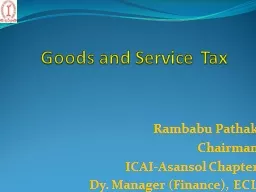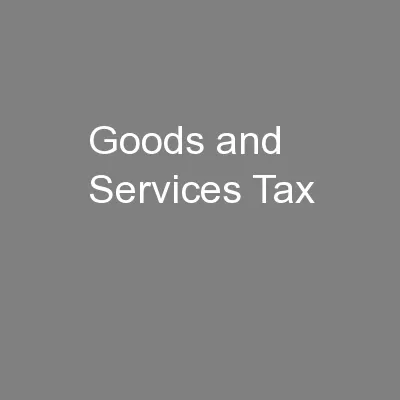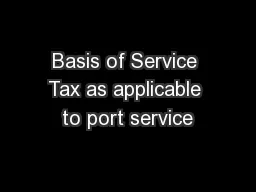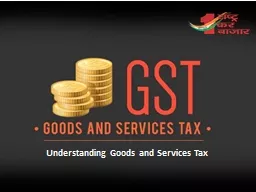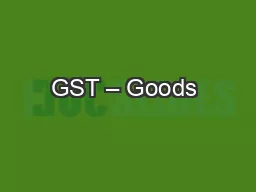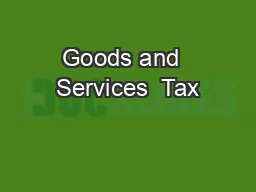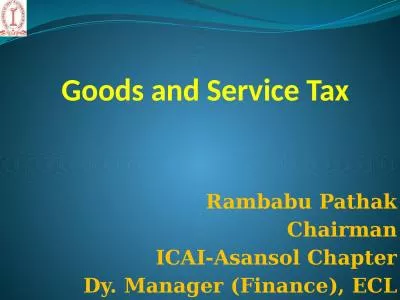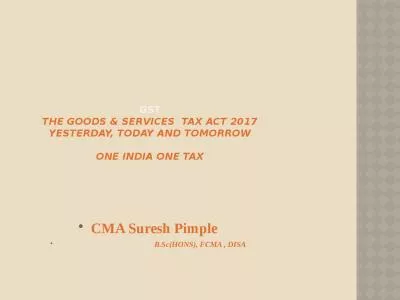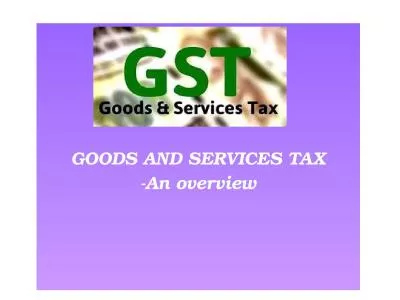PPT-Goods and Service Tax
Author : faustina-dinatale | Published Date : 2017-05-13
Rambabu Pathak Chairman ICAIAsansol Chapter Dy Manager Finance ECL GDP Growth Go Up by about 1 International Competitiveness by about 5 Increased FDI Already seen
Presentation Embed Code
Download Presentation
Download Presentation The PPT/PDF document "Goods and Service Tax" is the property of its rightful owner. Permission is granted to download and print the materials on this website for personal, non-commercial use only, and to display it on your personal computer provided you do not modify the materials and that you retain all copyright notices contained in the materials. By downloading content from our website, you accept the terms of this agreement.
Goods and Service Tax: Transcript
Download Rules Of Document
"Goods and Service Tax"The content belongs to its owner. You may download and print it for personal use, without modification, and keep all copyright notices. By downloading, you agree to these terms.
Related Documents

